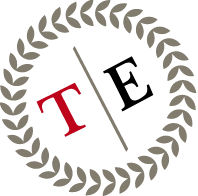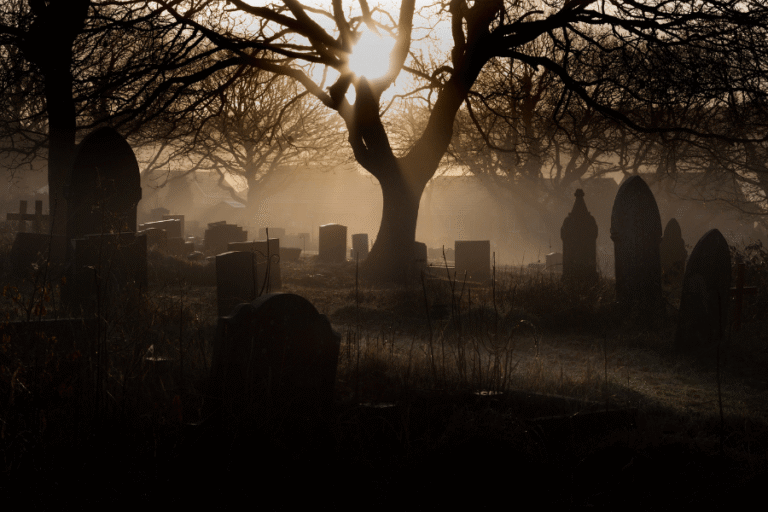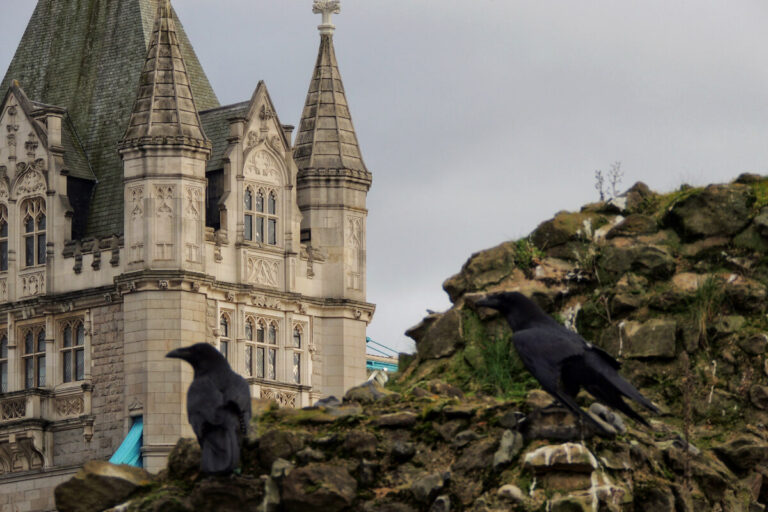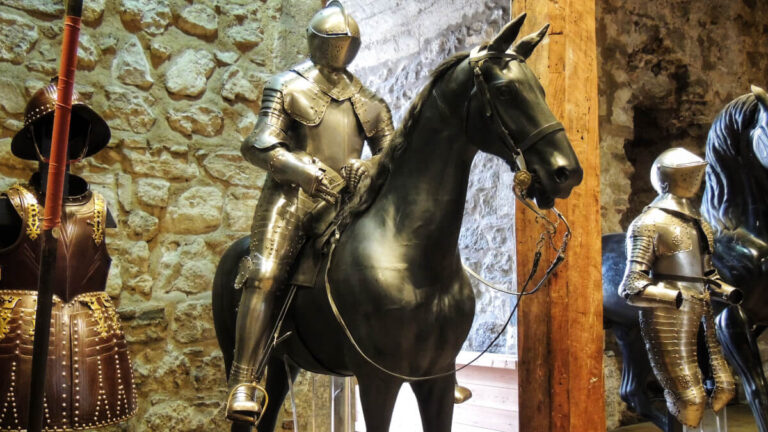Halloween is upon us once again.
Those long hot summer days at the beach have receded into distant memory, and the lengthening autumn evenings are firing our imaginations with dreams of eldritch happenings and witchy hauntings, of spectral graveyards where the undead roam free and of unspeakable crimes whose infamy resonates down the ages. And few cities can get us feeling as spooked as London: with a history as long as it is bloody, and with gloomy Gothic architecture and even gloomier weather par for the course, it takes a sturdy constitution indeed to never succumb to the conviction that dark forces are abroad in the English capital at this time of year.
To celebrate the spookiest time of the year, this week we’re taking a look at some of the most spine-chilling and uncanny places in London – from medieval towers to mysterious cemeteries and bizarre museums, these are seven sites you don’t want to miss on a visit to London this Halloween.
London Tours
See the Best of the English Capital!
It probably won’t come as a shock that a forbidding medieval tower of grey stone guarded by a flock of jet-black ravens who spend their days swooping and dive-bombing around its turrets has a reputation for being haunted. And indeed, the Tower of London is very haunted indeed. Doubling as a royal residence and maximum-security jail for much of its centuries-long history, countless men, women and children have been imprisoned, tortured and murdered on this site – a recipe for haunting by unquiet spirits.
Amongst the laundry list of those unjustly killed at the tower we might start with Anne Boleyn, beheaded on the orders of Henry VIII and rumoured to still roam the grounds with her head tucked under her arm. Then there were the Catholic clerics and missionaries horribly tortured in the Tower’s dungeons during the religious persecutions of Queen Elizabeth 1st, stretched on racks and hung upside down from manacles, crushed by great weights and dismembered limb by limb.
Perhaps the most notorious injustice carried out at the Tower of London, however, was that of the so-called princes in the tower’; as so famously recounted by Shakespeare, the story goes that the deposed child-king Edward V and his younger brother Richard were imprisoned here by their evil, power-hungry uncle, the Duke of Gloucester. The dastardly duke took the crown for himself, becoming King Richard III, and had the boys executed and buried in secret under a staircase in the turret that would infamously become known as ‘The Bloody Tower.’ Richard’s unspeakable crime was duly punished by the fates – a rebellion culminated in the king’s death in battle in 1485.
And what of the princes? Their presumed remains were uncovered in 1674 and reburied in Westminster Abbey, but plenty of suggestible visitors have been convinced that they have seen the boys, clad in white nightgowns, flitting about the stairways and corridors of the tower, lamenting their fate – or plotting their revenge.
Discover more about the bloody history of the Tower by joining an expert-led tour of the Tower of London with us.

There is no shortage of seriously spooky graveyards in London. From historic Highgate cemetery, where luminaries and leading lights from Karl Marx to George Michael enjoy their eternal repose (and where eldritch goings on are par for the course) to the endlessly disquieting Hyde Park pet cemetery, burial grounds are always good for a fright in the English capital. But to visit what is for our money one of the city’s most eerie graveyards, you’ll have to head off the beaten track to the southern suburb of Brockley.
Immersed in urban woodland, Brockley and Ladywell cemetery is one of London’s loveliest spots, and on a sunny summer’s day it’s an ideal place for a peaceful stroll. But things seem a lot more menacing as dusk begins to fall on a cool October evening. The array of time-worn gravestones, their stones cracked and warped by creeping tree roots that threaten at any moment to reveal their contents, take on a distinctively creepy air in the failing light – even more so when you discover that some of its long-time residents have a reputation for straying from their tombs.
One of the cemetery’s most august personalities is the Victorian actor and theatre impresario John Baldwin Buckstone, whose ghost has been visiting actors in the wings of playhouses across the country ever since his demise in 1879. As recently as 2009, Patrick Stewart claimed to have had an encounter with Buckstone during a staging of Waiting for Godot at the Haymarket theatre. Keep your eyes peeled and you might spot him heading off for a matinee.
If that wasn’t enough to get your pulse racing, then this 19th-century tale surely will. According to a report in the British Medical Journal from 1888, a young woman was quite literally frightened to death in the cemetery in March of that year. The 18-year-old victim was walking through the graveyard when she encountered a man dressed as a ghost (or if we suspend our scientific scepticism for a moment, perhaps the figure really was a supernatural spirit); so terrified was the poor young woman by the encounter that her heart gave out shortly afterwards, menaced to death by the spectral apparition.
If you still have the fortitude to head to the cemetery this Halloween, don’t say you haven’t been warned!

What is it about London pubs being haunted? An array of boozers in the English capital have spooky reputations for spectral spirits and unquiet ghosts making their presences known to unsuspecting drinkers and bar staff, and sometimes it feels like you can’t settle down for a quiet pint without looking over your shoulder for supernatural menace.
Obviously, the older and more atmospheric the pub the more likely it is to be haunted; the Spanish Inn, a ramshackle 16th-century watering hole of dark wooden beams, hidden nooks and uneven floors in Hampstead that once counted Charles Dickens amongst its regulars, can lay a claim to being the most haunted of the lot.
The legend goes that one-time owners and friends Francesco and Juan Porero (the Spaniards of the pub’s name) had a falling out after both falling in love with the same woman; their feud grew bitter, and then violent, leading to Juan’s death. Francesco did what any grief and guilt stricken brother would do, burying Juan in the hostelry’s garden and going on as if nothing had happened. The only problem? Juan’s ghost didn’t take the affront lying down, and has been stalking the place ever since. Oh, and in case you needed any further proof that the Spaniards Inn is haunted, Bram Stoker reputedly drew on the supernatural tales he heard in the pub when writing his vampire-opus Dracula.

When you come across a square with a name like Bleeding Heart Yard, you just know that there’s a fascinating back-story waiting to be unravelled. And so it proves!
The legendary events that gave the yard its macabre moniker seem to be taken straight from the pages of a story by 19th-century fright-master Edgar Allen Poe.
In the 17th century, much of the area around Holborn was owned by the Hatton family (who gave their name to the famous Hatton Gardens nearby, one of the capital’s premier destinations for jewellery shops). Sir Christopher Hatton was a favourite of Queen Elizabeth 1st, who according to a long-standing juicy urban legend owed his elevated position at court to a pact made by his wife with the devil. To celebrate their success, Hattons throw a party at the opulent palace they were gifted by the queen (adjacent to the historic Ye Olde Mitre pub, which still exists today), and the devil comes a-calling in the guise of an elegant Spanish diplomat to dance the night away with the lady of the house.
You can imagine what happens next: the following morning Lady Hatton’s horribly dismembered body is found in the alleyway behind the stables, torn limb from limb, her exposed and horribly engorged heart still throbbing on the cobbles and pumping blood across the yard. The 19th-century author Thomas Ingoldsbly gleefully recounts the scene in his poem The House Warming:
Of poor Lady Hatton, it’s needless to say,
No traces have ever been found to this day,
Or the terrible dancer who whisk’d her away;
But out in the court-yard – and just in that part
Where the pump stands – lay bleeding a LARGE HUMAN HEART!
And sundry large stains
Of blood and of brains,
Which had not been wash’d off notwithstanding the rains,
Appear’d on the wood, and the handle, and chains.
The devil it seems, had received his due.
Unsurprisingly, the tale is too good to be true: although Christopher Hatton did exist, the legend garbles the family tree and history, and no member of the Hatton clan is recorded to have been murdered in the yard. The real source of the placename is unknown, although a plausible theory associates it with a pub that once stood on the site whose sign was alleged to have portrayed the heart of the Virgin Mary pierced with five swords representing her sorrow, a common iconographic device in the early-modern period.

True crime and supernatural goings on coalesce at this Spitalfield pub in the heart of the city’s east-end. Formerly called the Jack the Ripper before it was quite reasonably decided that celebrating violence against women in pub-naming practices was inappropriate, there are no prizes for guessing why this Victorian establishment makes our list: it’s right smack-bang in the middle of the one-time stalking grounds of London’s most notorious serial killer.
Amongst the numerous victims of the shadowy predator was one Annie Chapman, whose brutal murder and mutilation in September 1888 caused widespread panic in Whitechapel. It’s been claimed (perhaps conveniently enough by the owner of the pub himself) that Annie enjoyed a tipple in the Ten Bells shortly before her abduction, and that her ghost still haunts the beer hall. Whether you buy the Ripper connection or not, the Ten Bells is a great spot to stop for a pint when in the East End, and does enjoy one indisputable (and less problematic) celebrity link – TV chef extraordinaire Jamie Oliver’s great-great-grandfather was the proprietor here back in the 1880s.

The history of medicine and anatomy are showcased in all their variety at this endlessly interesting London museum, but it’s a safe bet that it will be the more macabre and shocking exhibits and artefacts that will linger in your mind the longest after a visit to the Hunterian collection. The museum has its genesis way back in 1799, when the British government purchased the extensive collection of Scottish surgeon John Hunter on behalf of the Royal College of Surgeons, who put it on display at their Lincoln’s Inn Fields campus where it remains today.
Amongst the bizarre items on display are an array of terrifying looking surgical and dental instruments, various dissected animals preserved in formaldehyde, jarred tumours, growths and deformities, and the Evelyn tables – 17th-century anatomical preparations made from dissected bodies and presented on wooden boards.
One curio that you’ll no longer see is the skeleton of the so-called ‘Irish giant’ Charles Byrne, whose 8-foot frame made him a celebrity in late-18th-century London and was controversially acquired as a museum piece by Hunter after his death against Byrne’s wishes. The museum bowed to pressure to remove the skeleton in January 2023; a Joshua Reynolds portrait of Hunter posing alongside the skeleton now stands in its place.

You have to think that London’s town planners were almost taking the piss with the final entry on our list. At the very least, we’d be very surprised if the design brief for the Greenwich Foot Tunnel didn’t include a clause demanding that visitors have the bejeezus scared out of them. Opened to the public way back in 1902 to provide better access to the London shipyards, this 370-metre long pedestrian tunnel goes right under the river Thames, connecting the borough of Greenwich to the docklands area of Millwall in the Isle of Dogs.
Take the 100-step helical stairwell down from the domed entrance near the Cutty Sark on the southern bank of the Thames to arrive in the tunnel, an extremely eerie passage lined with reinforced cast iron, concrete and white tiles that slopes downward from both sides to a low point right beneath the centre of the river.
As you make your way through the tunnel, with only the sound of distant, unseen footsteps clanking and echoing off the tiles for company, it’s not hard to imagine you’ve wandered onto the set of a post-apocalyptic disaster movie. In the circumstances, it’s hardly surprising that many people have reported sighting shadowy figures, hearing disembodied voices and feeling mysterious unexplained presences in the tunnel. Great fun!
If you’re planning a visit to London and want to get the best out of your time in the city, then be sure to check out Through Eternity’s range of private, expert-led London tours. From visits to the Tower of London to Westminster Abbey, the British Museum and much more, we’ve got something for every interest and are happy to customise our itineraries to suit you – so get in touch today to start planning your London adventure!

London Tours
Explore the British Capital!












